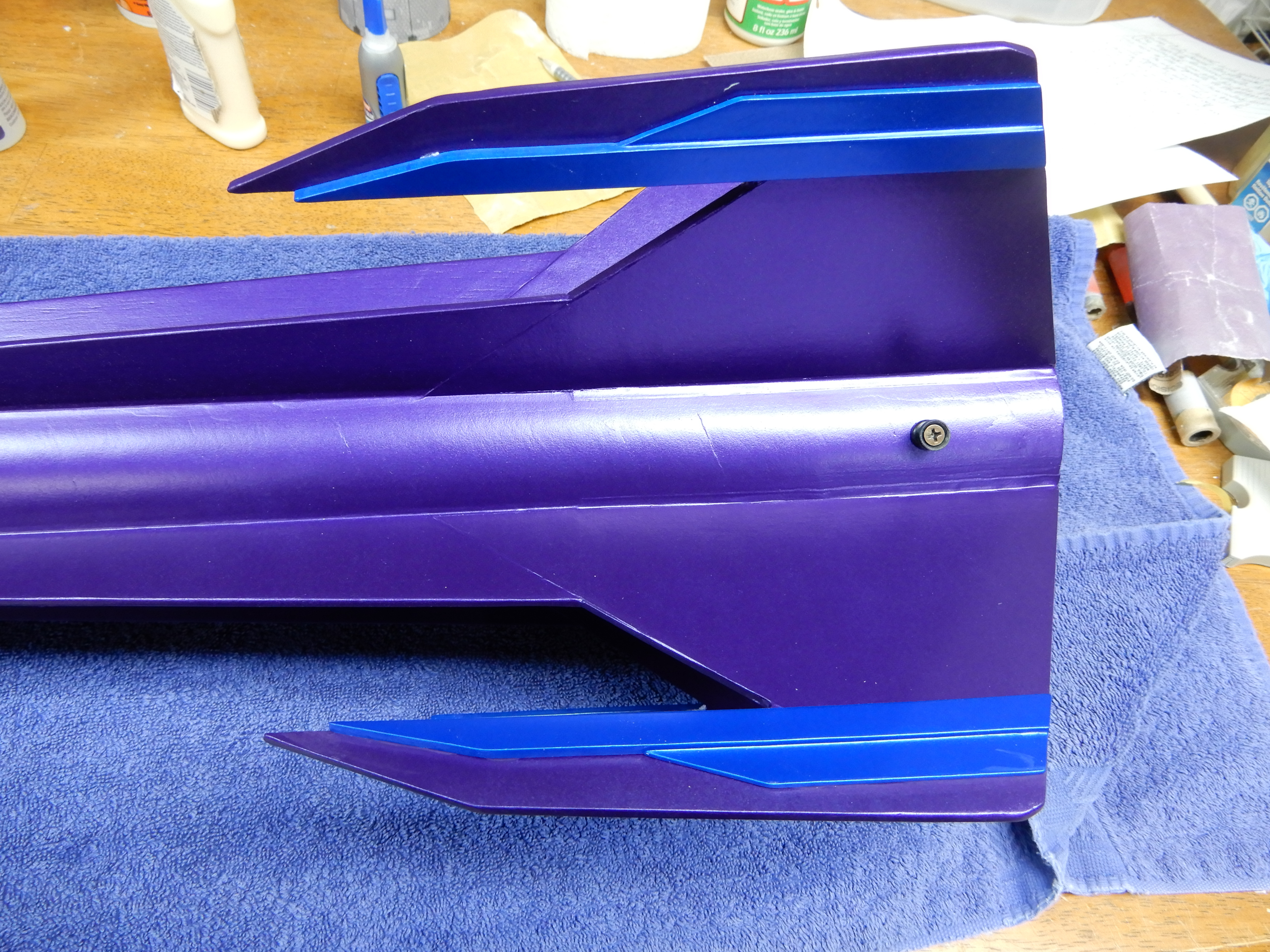Situation: I have a potential situation that I may need to address. On my old Talon rocket, the fin tips have a large extension at the tip which goes forward. I had done a multi-part fin out of 1/8" balsa, and the fin tip was a separate piece with the balsa grain parallel to the body tube. A couple times the tip would break off upon landing, but my last flight, using an E12-6 (the largest motor this rocket can handle), I noticed the rocket "wiggling" near apogee, and when I recovered it noticed that the fin tip was broken clean off. I guess the tip was flexing too much and broke?
This is a side view of the fin in question:

I've since built an upscaled version of this rocket, using 1/8" plywood for the fins. The fin is one piece, without the fin tip being a separate piece. I've noticed that the fin tips seem to have a fair bit of "flex/wiggle" side to side when I was puttying/sanding them. I don't know if the plywood would stand up to flight better than the balsa, but I was thinking of trying to make the area where the fin tip joins the main body stiffer somehow. I hope I won't need to "paper" the fins at this late stage.
I"m using up to an G-80, max speed should be in the neighborhood of 300mph. Thoughts?
This is a side view of the fin in question:

I've since built an upscaled version of this rocket, using 1/8" plywood for the fins. The fin is one piece, without the fin tip being a separate piece. I've noticed that the fin tips seem to have a fair bit of "flex/wiggle" side to side when I was puttying/sanding them. I don't know if the plywood would stand up to flight better than the balsa, but I was thinking of trying to make the area where the fin tip joins the main body stiffer somehow. I hope I won't need to "paper" the fins at this late stage.
I"m using up to an G-80, max speed should be in the neighborhood of 300mph. Thoughts?





![DSCN4370[1].JPG DSCN4370[1].JPG](https://cdn.imagearchive.com/rocketryforum/data/attachments/478/478267-a68299aa48eb906a805f631f82416890.jpg)





